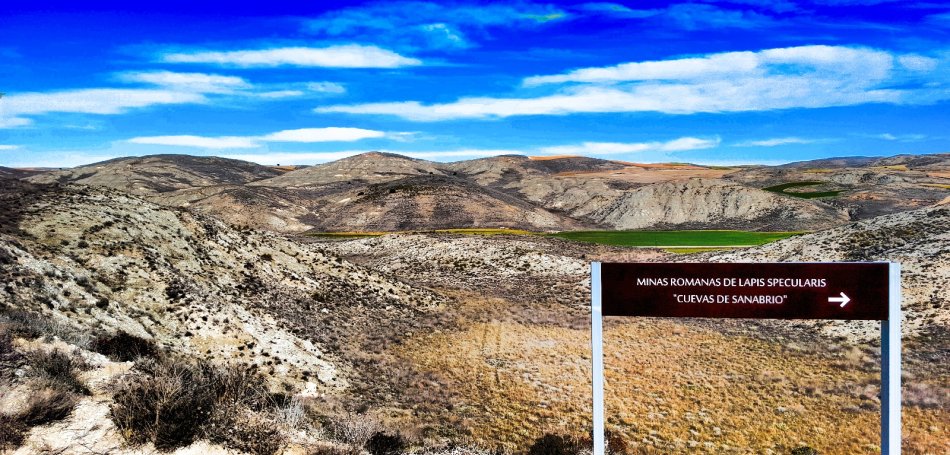
- publicado 02.06.2024
- por Cuenqueando
- minas romanaslapis specularisvisitas guiadas
Visit to the Roman Mines of Lapis Specularis
What was lapis specularis and what did its commercialization mean for the Roman Empire?
Lapis specularis is a crystallized gypsum that originates in karst geological areas, and therefore, in limestone areas such as Cuenca. It is a crystallized mineral that the Romans used as window glass from the 1st century AD, since the Romans did not have a transparent material of that level and until then they used either wooden frames or curtains. When they arrived in Hispania and controlled this area, they saw the potential of this material and began to exploit it for commercial purposes.
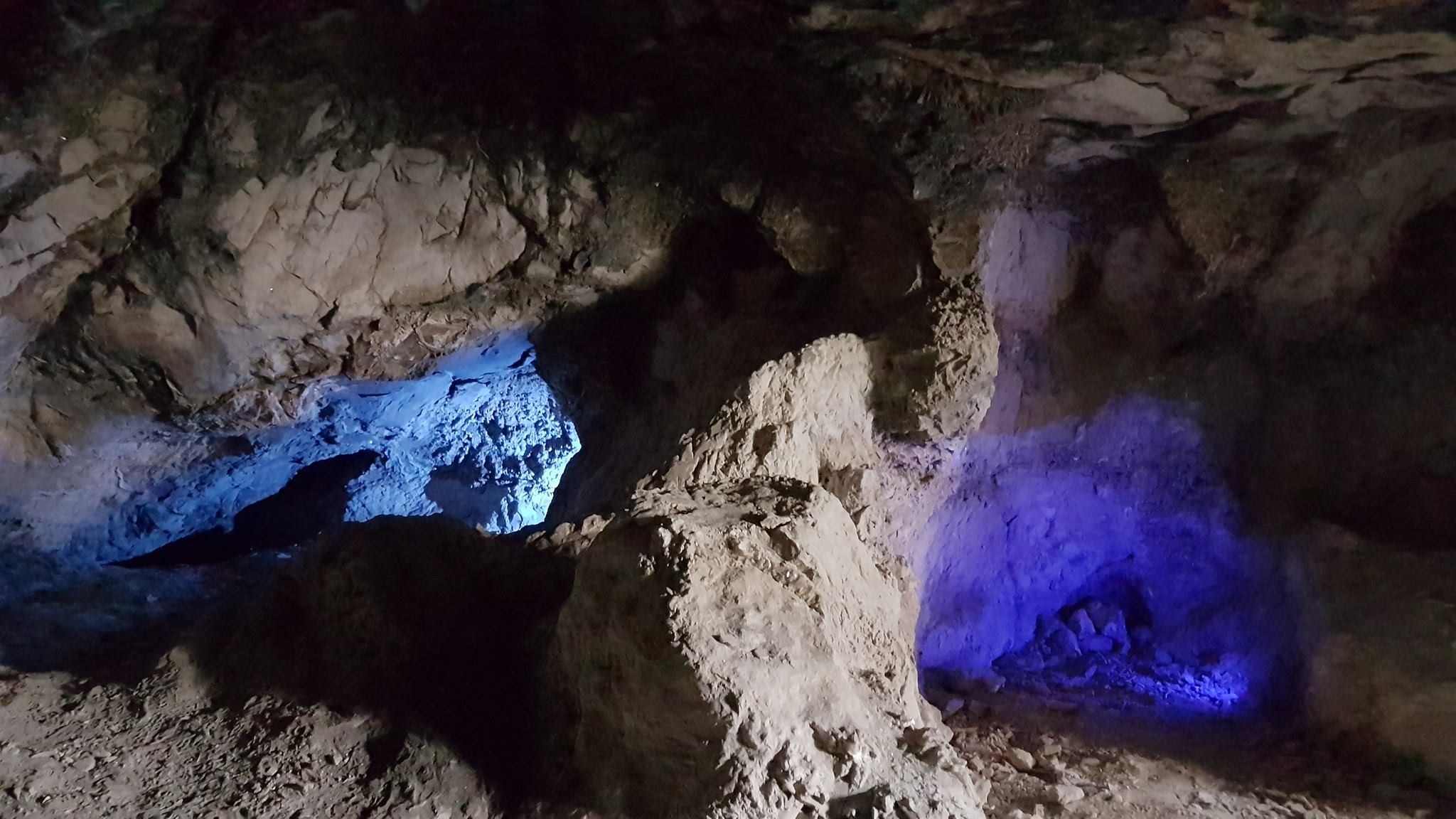
According to Pliny the Elder, a Roman writer from the 1st century AD, in his book Natural History, which was like an encyclopedia of the time, he said that the best lapis specularis in the entire Empire was 100,000 steps around the city of Segóbriga, which is why this city has such a remarkable urban planning, with its theatre, amphitheatre, circus and forum, because it became the centre of management, administration and marketing of all the lapis in this area.
This product was a luxury product, since it had to be extracted from mining operations, transported in carts to the port of Cartagho Nova (Cartagena) and from there in ships to Ostia, the port of Rome, to distribute it from there to the rest of the Empire; that is, ordinary people did not have lapis crystals in their homes. These mines are an example of the exploitation of this mineral; There are hundreds like these in the area surrounding Segobriga, but many are sunken, covered, inaccessible, etc.
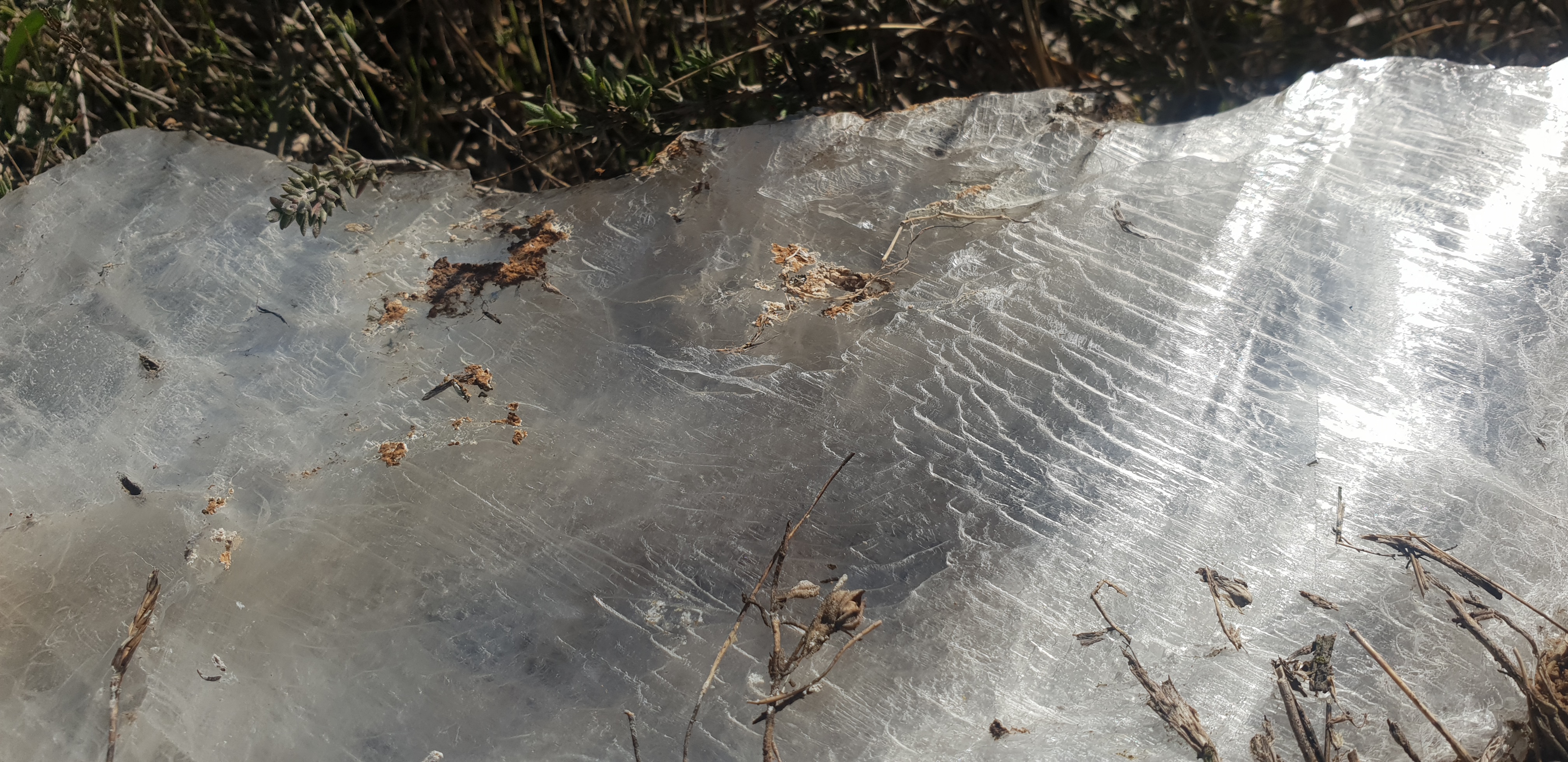
La Cueva del Sanabrio
Among the Roman mines of lapis specularis that can be visited in Spain, the Cueva del Sanabrio stands out, within the mining complexes of Hispania citerior.
In this particular case we have two mines, one that is more of a test pit than a mine, that is, they entered looking for important veins, since it is a material that can only be extracted in slabs. For this reason, this first mine is more of a test pit, the second is a mine as such where you can see very well what the mining system was like.
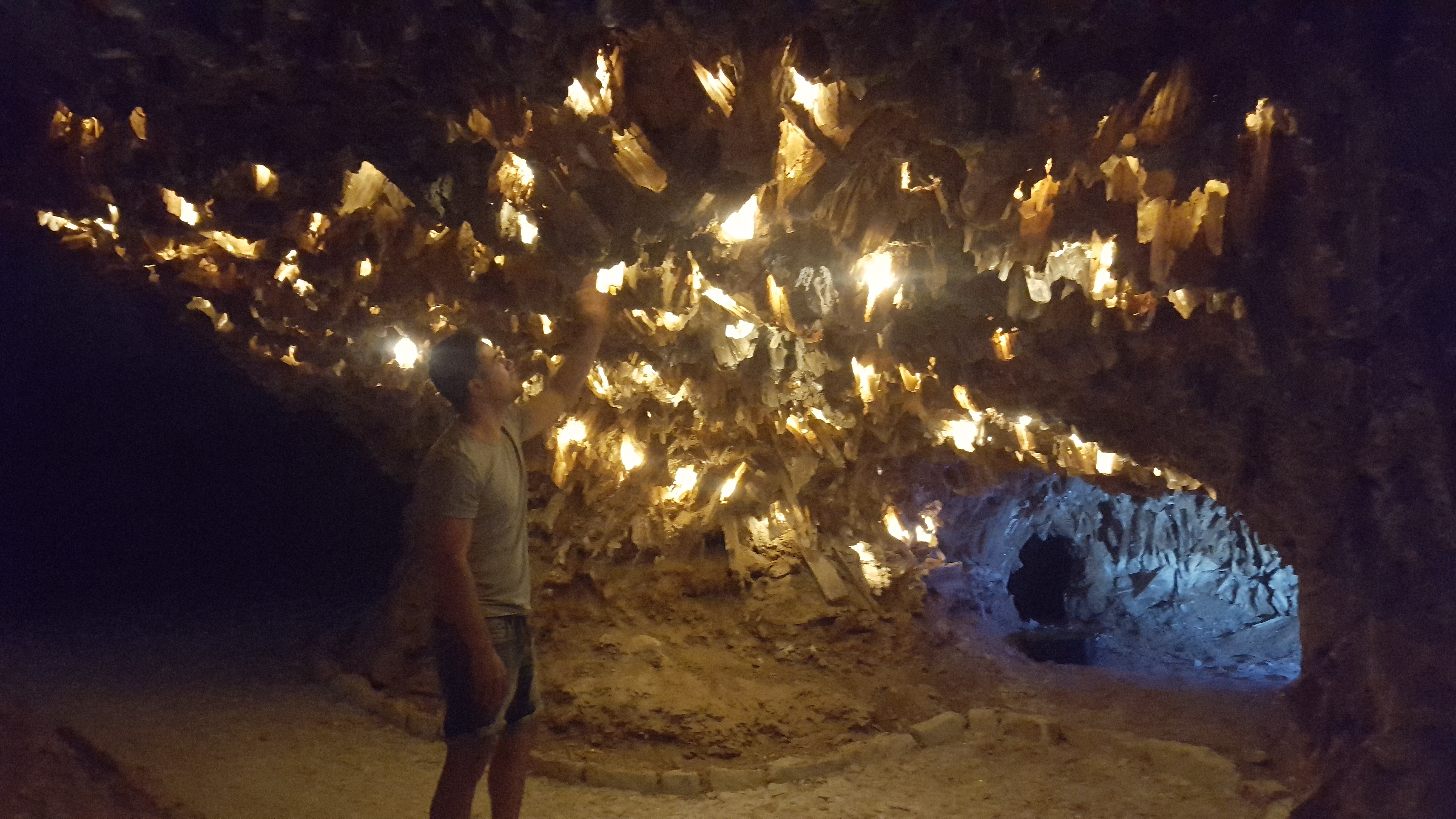
The first cave is known as the Hall of Knives, because the lapis specularis grows in this cave in longitudinal strips, which made it impossible to exploit the mineral in this way to make slabs, so as no veins were found this mine was never exploited. This room acquires great beauty thanks to the preserved crystals, you can appreciate the great transparency of the crystals in this area, which earned the esteem of the high social classes of Rome.
The second cave shows an exploitation system as such. First there is a central room, a kind of hall, which was used to collect the material from the galleries in the first room; from here it was extracted to the street. There were two ways to extract the mineral to the street depending on the specific mine, one through a vertical exit - through an extraction shaft with a wooden system and an elevator through pulleys - or a horizontal exit, as is the case in this mine.
It is important to highlight, in contrast to the Cueva de los Cuchillos, the small amount of lapis specularis in the galleries, due to the fact that in this mine there were good veins to exploit, and where the marks of the Roman picks when extracting the material can be seen in all the corridors.
.jpg)
These mines are archaeological sites from Antiquity and therefore help us to understand what life was like for a part of society in Roman times, since all the splendor of a city like Segobriga, with its temples, entertainment buildings, forum, etc., is based on the work of thousands of miners who exploited this economic activity for approximately two centuries.
How to visit the Roman mines of lapis specularis La Cueva del Sanabrio?
The Sanabrio Cave is located between the towns of Huete and Saceda del Río, 8km from Huete towards Priego on the CM 310 at km 111. They are geolocated on Google Maps as La Cueva del Sanabrio.
Due to the capacity of the mines, visits are made in small groups, so it is essential to make a reservation in advance through our website or by calling the Huete Tourist Office on 969 371 326.
They are open all year round and regular visits are made every Saturday and Sunday at the following times:
- Saturdays from November to March (winter): 10.30 - 11.00 - 11.30 - 16.00 - 16.30
- Saturdays from April to October (summer): 10.30 - 11.00 - 11.30 - 16.30 - 17.00 - 17.30
- Sundays: 10.30 - 11.00 - 11.30
The route is linear in both caves and of low difficulty, access is via a comfortable staircase and inside the caves the visits are adapted for all audiences. Not recommended for people with reduced mobility. It is advisable to wear comfortable shoes and flashlights and a helmet are provided during the visit. And if you are also travelling with your pet, you are in luck because pets are also welcome in the Roman Mines of the Sanabrio Cave.
What to visit near the Lapis Specularis Mines?
Nearby you have many resources to visit and explore La Alcarria conquense. Very close you have the monumental town of Huete that you will love, and we recommend that you book a guided tour so you don't miss any of its heritage. Tours of the town are offered from the Tourist Office on Saturday mornings and afternoons, and on Sunday mornings.
You can also visit the Ruta de las Caras, a unique nature tour discovering the impressive sculptures carved into the rock.
And of course, if you haven't yet visited the Roman City of Segóbriga, we highly recommend you visit it.
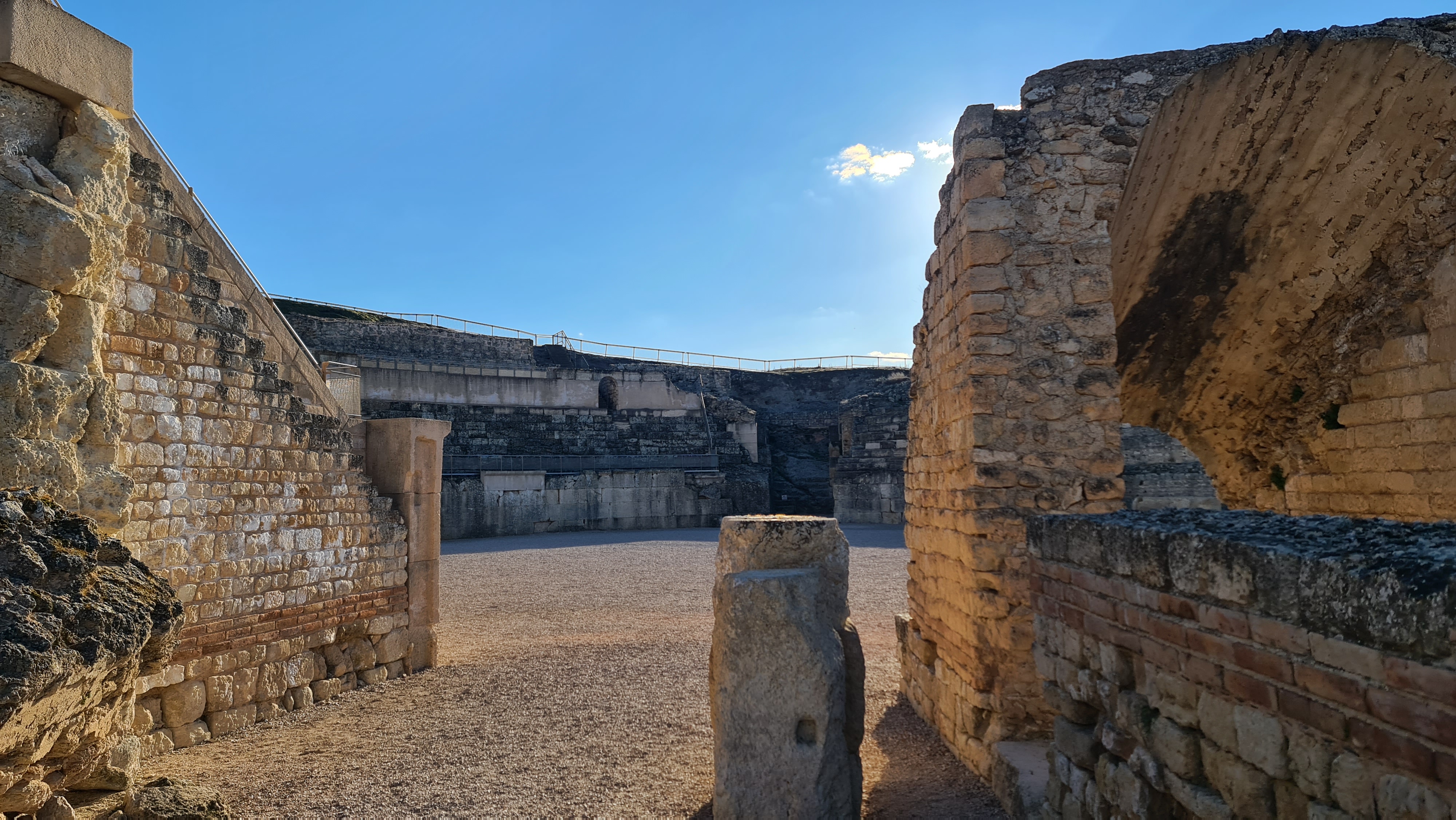
One day is going to be too short for you, we know that, so we recommend that you visit Huete in two days and stay in a hotel full of charm: Casa Palacio Conde de Garcinarro.
See you in Cuenca!
 ES
ES EN
EN PT
PT